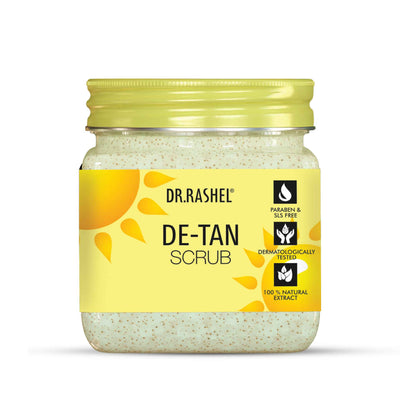.jpg)
Table of Contents
- What are Ceramides for Skin?
- What is Vitamin C for Skin?
- Can You Use Ceramides and Vitamin C Together?
- Final Note
- FAQs: Ceramides vs Vitamin C
If there’s one thing we know about Indian skin, it’s that it faces a unique set of challenges. Harsh sunlight and high UV index lead to tanning and stubborn pigmentation. Pollution and dust cause irritation and dullness. Seasonal changes bring either sticky humidity or uncomfortable dryness. In this battle, two ingredients dominate skincare conversations - ceramides and vitamin C.
Both are science-backed, both are found in Korean skincare, and both claim to solve problems Indian skin knows all too well. But here’s the real question: Which one works better for you?
What are Ceramides for Skin?
Ceramides are natural lipids (fats) that make up nearly 50% of the skin’s outer barrier. Think of your skin as a wall: skin cells are the bricks, and ceramides are the cement that holds everything together. Without enough ceramides, the wall crumbles - leading to dryness, sensitivity, redness, and faster aging.
How Ceramides Help Indian Skin:
- Hydration lock: Prevents water loss in hot or air-conditioned environments.
- Barrier repair: Restores strength after sunburn, pollution damage, or harsh scrubs.
- Soothing effect: Calms sensitivity and reduces irritation common in Indian urban climates.
- Anti-aging support: Keeps skin plump, resilient, and less prone to fine lines.
What is Vitamin C for Skin?
Vitamin C (ascorbic acid and its stable derivatives) is one of the most powerful antioxidants used in skincare. It fights free radical damage from UV rays and pollution, while also stimulating collagen and brightening the complexion.
How Vitamin C Helps Indian Skin:
- Brightening: Reduces tanning and fades dark spots.
- Pigmentation control: Fights stubborn marks from acne or sun exposure.
- Glow boost: Gives skin a fresh, luminous look.
- Anti-aging: Supports collagen production for firmer, smoother skin.
Ceramides vs Vitamin C:Understanding The Real Differences
|
Aspect |
Ceramides |
Vitamin C |
|
What it is |
Lipids that naturally exist in the skin barrier. |
Antioxidant (Vitamin B3 derivative or ascorbic acid). |
|
Primary Function |
Repairs and strengthens the skin barrier, locks in hydration. |
Brightens skin, reduces pigmentation, fights free radicals. |
|
Skin Concerns Solved |
Dryness, sensitivity, barrier damage, irritation. |
Pigmentation, tanning, dullness, fine lines. |
|
Typical Formulation |
Creams, moisturisers, barrier balms. |
Serums, essences, brightening toners. |
|
Best Suited For |
Dry, sensitive, aging, or post-treatment skin. |
Oily, pigmented, sun-damaged, or uneven skin. |
Can You Use Ceramides and Vitamin C Together?
You can use both together for glowing glass skin. Vitamin C works on the surface to brighten and protect against environmental stressors, while ceramides strengthen the foundation beneath to ensure the skin barrier can handle active treatments.
For Indian skin, which often faces both sensitivity and pigmentation, the pairing is ideal. Start your morning with a vitamin C serum to fight sun damage, follow it up with a ceramide cream to soothe and lock in hydration, and always finish with sunscreen. This layering mimics the Korean skincare philosophy of combining brightening with barrier care.
Final Note
Ceramides and Vitamin C aren’t competitors - they’re two sides of healthy skincare. One strengthens and protects; the other brightens and defends. For Indian skin facing sun, pollution, and seasonal extremes, the real win is combining them wisely.
With Dr. Rashel, you don’t need to compromise. Whether you want to fade stubborn pigmentation, calm sensitivity, or simply keep your skin glowing all year round, you’ll find Korean-inspired, India-ready solutions powered by ceramides and vitamin C.
FAQs: Ceramides vs Vitamin C
What’s the main difference between ceramides and vitamin C?
Ceramides are barrier-strengthening lipids that repair and protect the skin, preventing moisture loss and irritation. Vitamin C, on the other hand, is a brightening antioxidant that reduces pigmentation, fades tanning, and boosts collagen. In short: ceramides protect, while vitamin C corrects.
Can I use ceramides and vitamin C together in one routine?
Yes, they complement each other perfectly. Vitamin C works on the surface to brighten and fight free radicals, while ceramides reinforce the skin barrier beneath. A good order is vitamin C serum first, followed by a ceramide moisturiser, and then sunscreen in the morning.
Is vitamin C safe for sensitive Indian skin?
Vitamin C can be slightly irritating if your skin is very sensitive, especially in its pure ascorbic acid form. However, gentler derivatives (like Ethyl Ascorbic Acid or SAP) are safer. Pairing vitamin C with ceramides also helps reduce the chance of redness or stinging.
Can I use ceramides after vitamin C serum?
This is one of the best layering methods. Vitamin C delivers brightening and antioxidant protection, while ceramides applied afterward lock in hydration and soothe the skin. This pairing not only boosts results but also reduces irritation.
Should I use ceramides in the morning or night?
You can use ceramides both morning and night. In the morning, they provide protection from environmental stressors like pollution, and at night, they support the skin’s natural repair process. Many dermatologists recommend keeping them in both routines for maximum benefit.
Which is better for anti-aging: ceramides or vitamin C?
Both play different but complementary roles in anti-aging. Vitamin C boosts collagen to reduce fine lines and firmness loss, while ceramides prevent premature aging by maintaining a strong barrier and keeping skin plump. Used together, they give a more complete anti-aging routine.
Can I use vitamin C serum without sunscreen?
No, sunscreen is essential when using vitamin C. While vitamin C protects against free radicals, it doesn’t block UV rays. Without SPF, you may continue to tan or worsen pigmentation, reducing the benefits of vitamin C.
Can ceramides and vitamin C be used around the eyes?
Ceramides are very gentle and can be used safely around the eyes in creams or gels. Vitamin C can also be used if the formulation is designed for the eye area, but strong versions may sting or cause irritation.
Which is better for Indian climates – ceramides or vitamin C?
Both are valuable. Vitamin C is excellent for tackling pigmentation and tanning caused by harsh sun, while ceramides are essential for repairing barrier damage from pollution, humidity, and seasonal dryness. For Indian skin, a combination is more effective than choosing just one.
Can ceramides and vitamin C be used with retinol?
They actually make retinol easier to tolerate. Vitamin C is best used in the morning, while retinol is used at night. Ceramides can be layered with either to soothe dryness and protect the barrier, reducing irritation from retinol.







